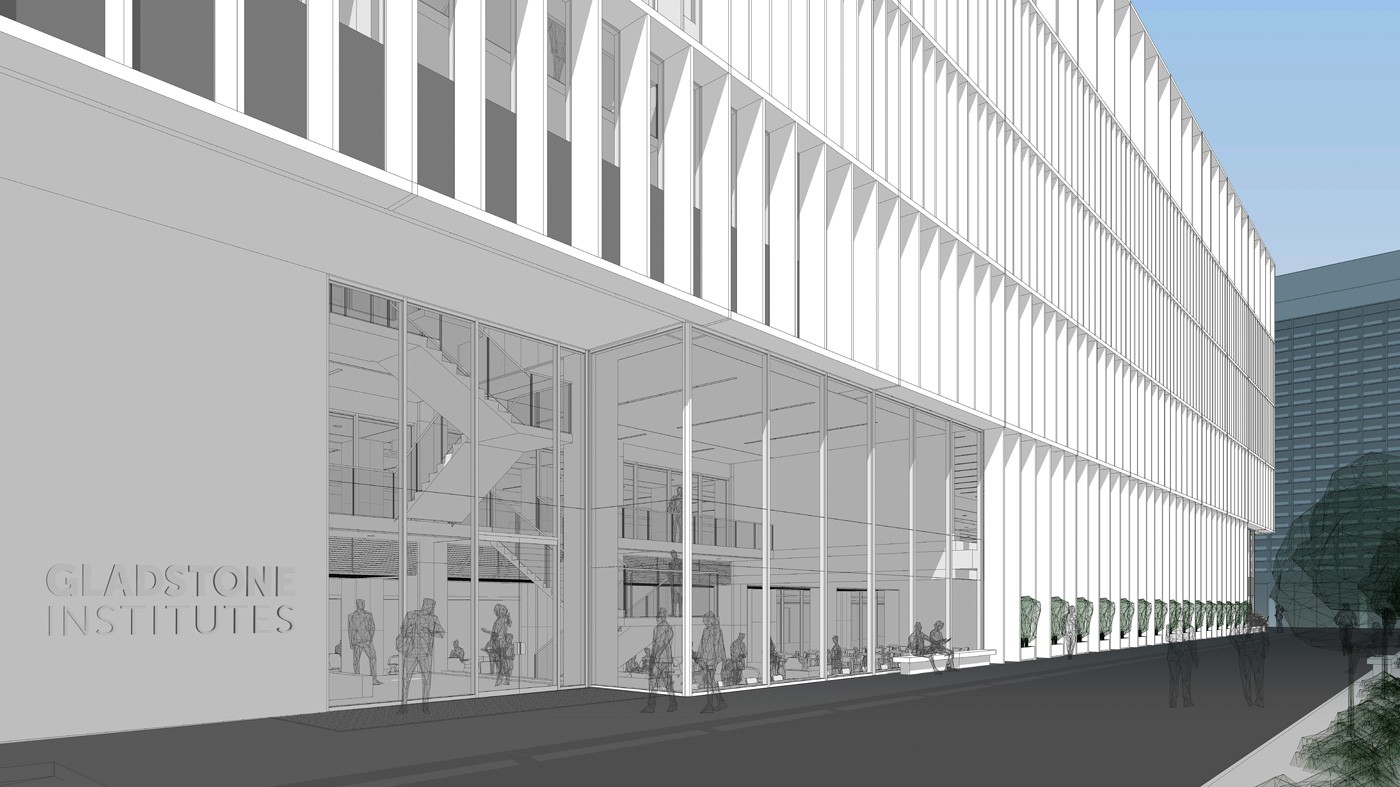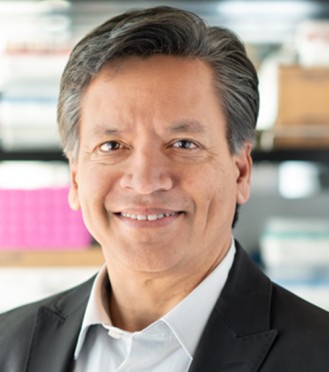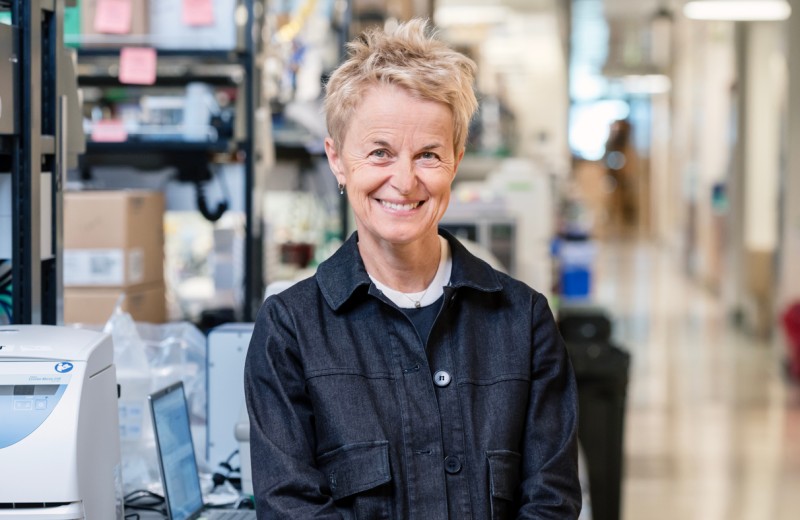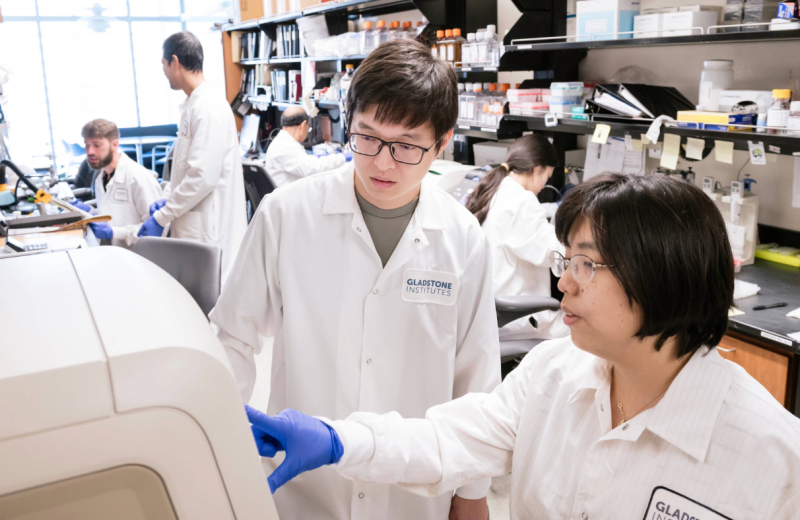Gladstone NOW: The Campaign Join Us on the Journey✕

The expansion of Gladstone's building will provide space for 15 new labs. Image courtesy of DGA.
Update: This article was updated on December 19, 2023.
A drug that can reverse signs of Alzheimer’s disease. A therapy to regenerate damaged hearts and cure heart failure. New ways to kill cancer cells. A cure for HIV. These are some of the dreams that researchers at Gladstone Institutes are working to make a reality.
To do this work, the scientists require physical space; room for lab benches, microscopes, and other powerful equipment. Gladstone’s building, located on Owens Street in the Mission Bay neighborhood of San Francisco, has almost 200,000 square feet and room for approximately 30 labs. But they’re rapidly reaching capacity.
“In the last few years, we’ve attracted many talented new investigators and heavily invested in areas like artificial intelligence and gene editing to complement our deep knowledge of disease,” says Deepak Srivastava, MD, president of Gladstone. “There has never been a better opportunity to solve some of the world’s most devastating diseases. But to do that, Gladstone needs to grow.”
To meet this unique moment in time, Gladstone plans to expand on its current home. The new design announced today will add 100,000 square feet to Gladstone’s building—space for an additional 15 labs and 300 new employees. Construction is slated to begin in late 2024.
“This expansion will not only allow them to continue to be at the forefront of cutting-edge research but also be a part of the revitalization of our city and our economy.”
Over the course of Gladstone’s nearly 45-year history, its scientists have made critical discoveries that contributed to our understanding of stem cell biology, heart disease, Alzheimer’s disease, HIV, and more. At the onset of the COVID-19 pandemic, many Gladstone labs also pivoted their focus to the novel virus, helping drive innovations leading to new therapeutics and diagnostic tools.
“Gladstone has long been a pillar of scientific innovation and a great example of the amazing things that are happening in San Francisco that are making a real difference in people’s lives all over the world,” says Mayor London Breed. “This expansion will not only allow them to continue to be at the forefront of cutting-edge research but also be a part of the revitalization of our city and our economy.”
Making the Most of Mission Bay
Gladstone’s location has played an important role in its successful history, and is key to its future promise. Originally located within San Francisco General Hospital, Gladstone developed one of the first buildings in the Mission Bay neighborhood in 2004, shortly after UC San Francisco’s (UCSF) Genentech Hall. Since then, the neighborhood has become home to UCSF’s biomedical research and its hospitals, as well as many biotechnology startups.
“Over the past several years, Mission Bay has become an internationally recognized hub of biomedical research and one of the city’s fastest developed communities,” says District 6 Supervisor Matt Dorsey. “By growing within Mission Bay, Gladstone will be able to maximize its partnerships with neighboring institutions and contribute to our local economy.”
The location is also key to Gladstone’s ability to translate its research efforts into therapeutics that ultimately help patients. Since 2017, Gladstone scientists have launched 14 startup companies, which are developing approaches to combat Alzheimer’s disease, heart failure, and viral infections. Many of these new ventures are located in the neighborhood and employ hundreds of people.
“The potential is just enormous,” says Thor Kaslofsky, executive director of the Office of Community Investment and Infrastructure. “In addition to advancing research, Gladstone scientists are creating jobs, and really building the future of San Francisco’s economy.”
Fulfilling Gladstone’s Mission
In addition to scientific discovery, a key part of Gladstone’s mission is to train the next generation of leaders in an inspiring and diverse environment. Gladstone currently has more than 150 trainees at the graduate and post-graduate level. In addition, it hosts summer internships aimed at increasing the participation of individuals from underrepresented groups in STEM.
“Gladstone isn’t just a building, it’s also a community where people from everywhere can come to take the next steps in their career,” says Srivastava. “The expansion will help build that capacity, and is the kind of growth we want to see in San Francisco. The new addition will help us grow both in research and in mentorship, ensuring that Gladstone is equipped for the next 45 years of its trajectory.”
For Media
Julie Langelier
Associate Director, Communications
415.734.5000
Email
About Gladstone Institutes
Gladstone Institutes is an independent, nonprofit life science research organization that uses visionary science and technology to overcome disease. Established in 1979, it is located in the epicenter of biomedical and technological innovation, in the Mission Bay neighborhood of San Francisco. Gladstone has created a research model that disrupts how science is done, funds big ideas, and attracts the brightest minds.
Featured Experts
One Person’s Final Gift to Science Gets Us Closer to an HIV Cure
One Person’s Final Gift to Science Gets Us Closer to an HIV Cure
A new documentary follows Jim Dunn’s end-of-life decision to donate his tissues to HIV research.
Institutional News HIV/AIDS Infectious Disease Roan LabBeyond Viruses: Expanding the Fight Against Infectious Diseases
Beyond Viruses: Expanding the Fight Against Infectious Diseases
The newly renamed Gladstone Infectious Disease Institute broadens its mission to address global health threats ranging from antibiotic resistance to infections that cause chronic diseases.
Institutional News News Release Cancer COVID-19 Hepatitis C HIV/AIDS Zika Virus Infectious DiseaseFueling Discovery at the Frontiers of Neuroscience: The NOMIS-Gladstone Fellowship Program
Fueling Discovery at the Frontiers of Neuroscience: The NOMIS-Gladstone Fellowship Program
The NOMIS-Gladstone Fellowship Program empowers early-career scientists to push the boundaries of neuroscience and unlock the brain’s deepest mysteries.
Institutional News Neurological Disease Mucke Lab NOMIS




